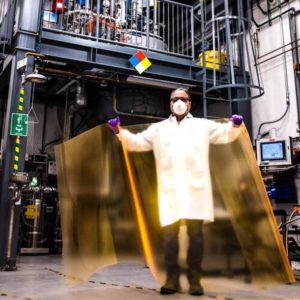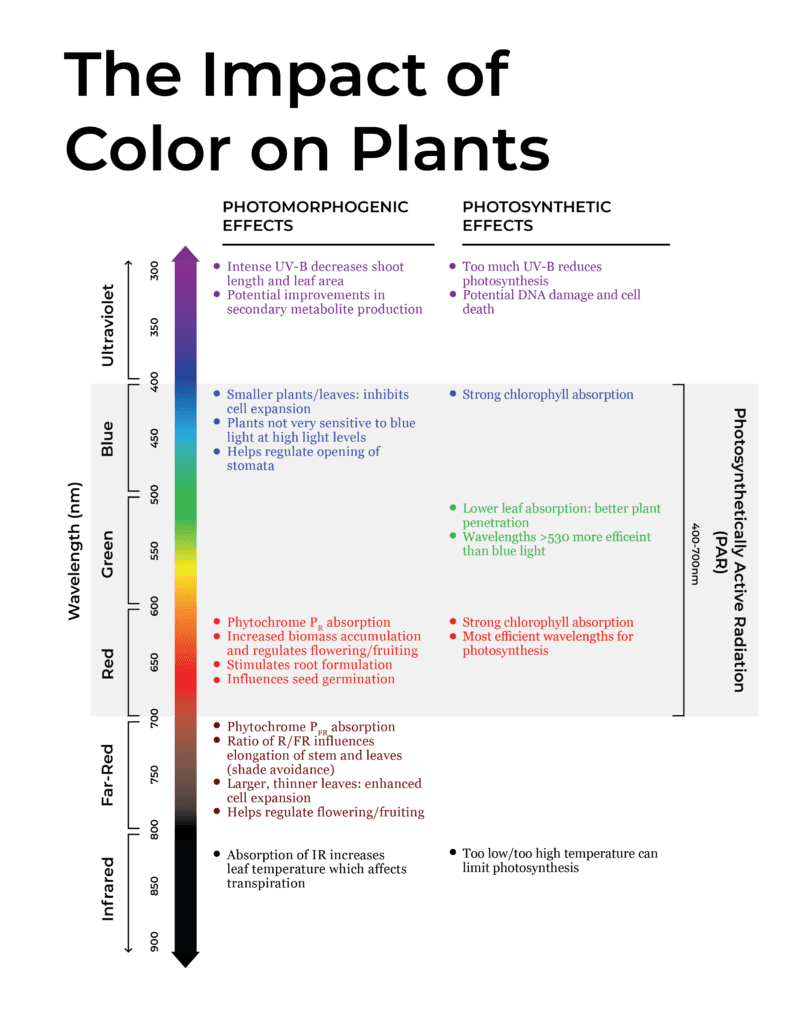
Quantum Dots Boost Sunlight Efficiency in Greenhouses
2022 UbiQD Launches Two New Greenhouse Film Products for UbiGro November 22, 2022 UbiQD and Heliene Initiate Joint Development of Agrivoltaic Modules for Greenhouses March 22, 2022 UbiQD Shares New Greenhouse Case Studies, Launches UbiGro.com AgTech Website February 8, 2022 2021 UbiQD: UbiGro luminescent film improving cannabis yield through spectral modification December 17, 2021 UbiQD Installs Quantum Dot Solar Window Pilots in Commercial Buildings November 1, 2021 2020 The Coupling of Nanotechnology & Luminescent Films to Optimize Greenhouse Quality October 12, 2020 From Farm to Table: Quantum Dots that Do It All September 24, 2020 Q&A: Nanosys, UbiQD Bring Quantum Dots to Agriculture September 15, 2020 Space Veggies: How Quantum Dots Help Grow Vegetables on Earth & in Space July 16, 2020 UbiQD & Solvay Announce Greenhouse Technology Development Partnership July 7, 2020 Quantum Dots Shift Sunlight’s Spectrum to Speed Plant Growth June 4, 2020 Quantum Dots Enhance Horticultural Efficiency of Sunlight in Greenhouses June 1, 2020 Greenhouse Technology Boosts Crop Yields Up To 20% May 28, 2020 Layer Of Light Helps Plants Get More From The Sun May 25, 2020 This Tech Makes Sunlight More Potent So Normal Greenhouses Can Grow More May 21, 2020 UbiQD and Nanosys Partner to Improve Greenhouse Crop Yields May 20, 2020 This ‘Quantum Dot’ Tech Helps Grow More Plants By Making Sunlight More Powerful May 20, 2020 Quantum Dot Technology for Bigger Yields and Renewable Energy, with UbiQD April 5, 2020 Hello Tomorrow Deep Tech Finalist February 7, 2020 Cannabis Today Podcast – Steve Blank January 11, 2020 2019 Photosynthetically Efficient Colors for Crop Growth and Biomass Accumulation December 7, 2019 NASA Awards UbiQD Second, Larger Contract to “Tailor the Solar Spectrum for Enhanced Crop Yield for Space Missions” December 2, 2019 Harvesting Of Red Light Accelerates Plant Growth November 17, 2019 Frost & Sullivan Best Practice Award November 5, 2019 Technological Advances Help Optimize Greenhouse Sunlight April 2, 2019 UbiQD Wins 2019 SXSW Pitch Competition, Hyper-Connected Communities Category March 19, 2019 10 Killer Agricultural Technologies February 1, 2019 Horticultural lighting remains a hot topic as increasingly food, flowers, and cannabis are grown in controlled environment agriculture (CEA) settings either indoors or in greenhouses. Greenhouses have been thought by many to offer the best of both the outdoor world via sun exposure to plants and the ability to control the environment to a significant degree. But now UbiQD and Nanosys say they can improve the use of sunlight energy for greenhouse operations by leveraging quantum dots (QDs) and shifting the spectra in a way that allows plants to better utilize the radiated energy that is critical for photosynthesis and other plant-growth phenomena. So this story is not about LED technology where manufacturers have long sought to replicate the spectral power distribution (SPD) of the sun. But in essence, research on LED-based horticultural lighting set the stage for this development. We have regularly described how solid-state lighting (SSL) enables growers to only deliver the wavelengths that plants require, and thereby optimize energy usage. For example, there are chlorophyll absorption peaks in the red and blue regions that are key to photosynthesis. We have also written about other important wavelengths such as in coverage of our HortiCann Light + Tech event and the earlier Horticultural Lighting Conferences. Still, the horticultural lighting sector has been most focused on the 400–700-nm range of wavelengths that are referred to as photosynthetically active radiation (PAR). And the UbiQD and Nanosys news relates to converting some of the sun’s energy from outside the PAR range into PAR energy. The companies simplified the concept, saying that their technology creates “more photosynthetically efficient orange light that plants crave.” The secret sauce is the QDs and Nanosys is one of the largest manufacturers of those nanoparticles. UbiQD takes those QDs and embeds them into UbiGro plastic films or sheets that can be applied to the surface of the greenhouse. QDs have been widely used in TV and display applications. The particles can be activated optically or electrically. If such a particle absorbs a photon from the sun or other source, it will in turn emit a photon of a different color in a similar manner to how phosphors operate when used with LEDs to make white light. The color or wavelength of light that a QD produces is based on the size of the particle. In particular, QDs produce much richer red wavelengths than do phosphors and thus the use in TVs to achieve a richer gamut. Nanosys allied with Samsung all the way back in 2010 and of course Samsung has been a leader in using QDs in TV applications. Now in the horticultural sector, the QD technology may help increase the yield of greenhouses, even when used separately from LED technology. Of course, LED-based lighting is also used to supplement the sun in greenhouses, especially in northern regions where short days limit sun exposure. And the opportunity for the QD suppliers may be substantial. “The greenhouse cover films market produces twenty times more area than the display industry and continues to grow in double digits on an annual basis,” said Jason Hartlove, CEO of Nanosys. “Greenhouses represent a massive opportunity for the unique benefits of quantum dot technology. We look forward to working with UbiQD to bring UbiGro to market with our industry-leading scale, cost-effectiveness, and highest-quality manufacturing standards.” Learn more about the latest in horticultural lighting and other AgTech topics at HortiCann Light+Tech slated for Oct. 20 in San Jose, CA. View article Share:









